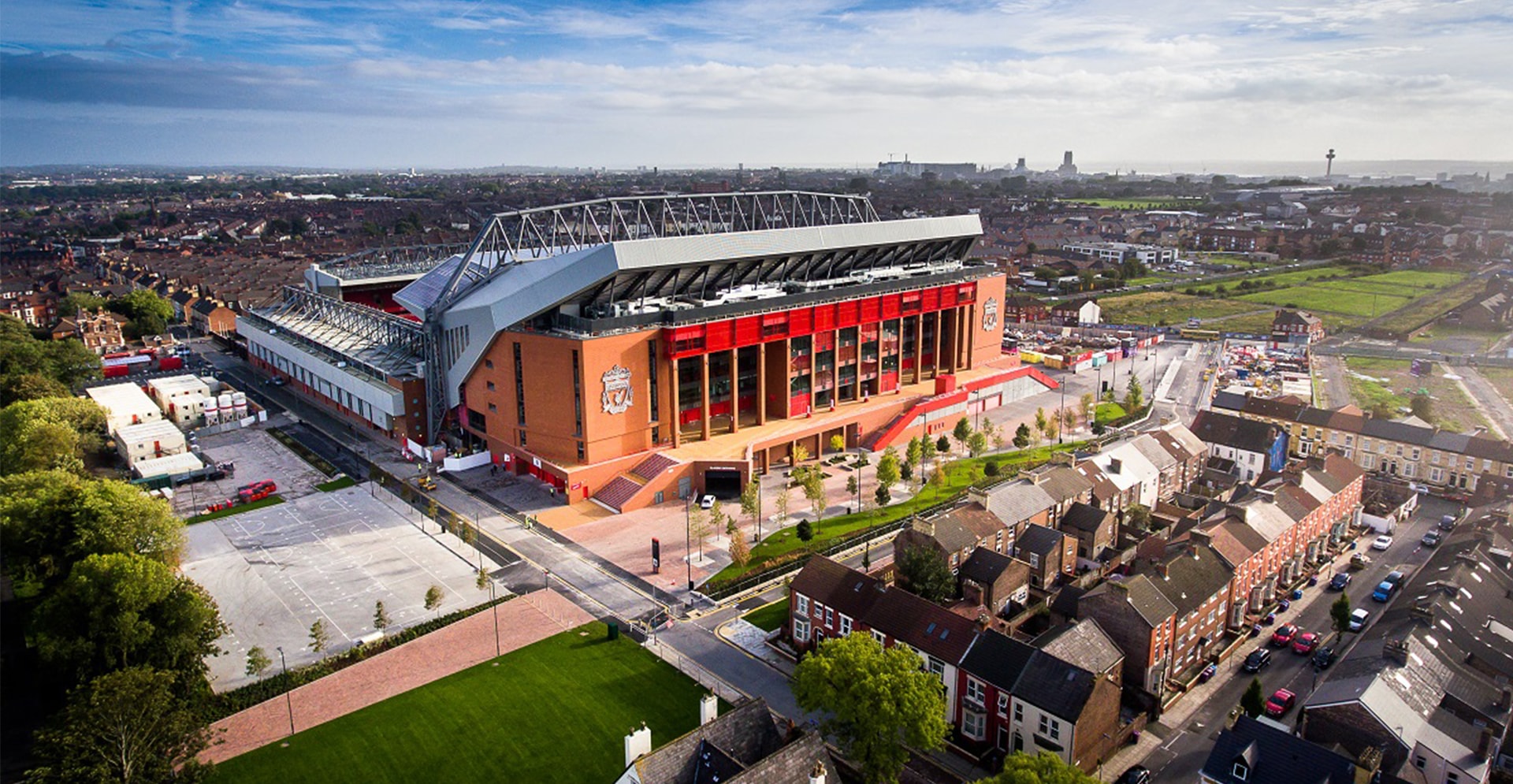Table of Contents
The challenge
Liverpool Football Club’s home ground needed a fresh lease of life. More seats, increased hospitality, enhanced experience, all built on the heritage of an iconic landmark.
From music to literature, culture has always been important to the city of Liverpool. A former European Capital of Culture, Liverpool has a rich history, strong industrial heritage, and vibrant contemporary culture. Today, football plays a huge part in the city’s identity and Anfield stadium, home to Liverpool FC since their formation in 1892, is a major landmark. So, when Liverpool FC decided to redevelop one of the stands, careful consideration had to be undertaken to ensure it maintained the heritage and atmosphere of the club and would be fit for the future.
The solution
Arcadis worked with Liverpool FC to project manage the transformation, overcoming a range of challenges to deliver a world-class stadium experience.
For most premier league football clubs looking to expand, the tried and tested process of identifying a new site to relocate to, with increased capacity and new state-of-the-art facilities, is the norm. Liverpool FC had several opportunities to do this, but new owners, the Fenway Sports Group, were passionate about staying at Anfield.
The character of a stadium is crucial and Anfield’s reputation as an exciting and noisy stadium had to be maintained. The owners recognised that building on the heritage and memories of the existing stadium was the best way to enhance atmosphere and experience.
-
READ MORE
Arcadis worked with Liverpool FC to Project Manage the entire stadium transformation. Site location and brand image, seating size and density, sightlines, bowl design, acoustics, food outlets, facilities and surrounding landmarks all needed to be given equal attention.
We ensured these criteria was met through a comprehensive briefing process which involved staff across all departments, as well as stadium users and special interest groups. Once we understood which areas of the stadium delivered the most value, we were able to start a carefully managed design process. At each key stage, the scheme was reviewed to ensure that it met the criteria to deliver an experience that embodies Anfield.
We undertook a range of different analyses, including loss of seats, construction complexity, planning risk, operational continuity, and return on investment, before Liverpool FC decided on the best expansion scheme.
However, expanding a stadium in a built-up area – as at Anfield - brings challenges. To increase capacity while maintaining appropriate sightlines, it is necessary to build above and behind existing structures. However, the increased footprint and building height can in itself lead to problems, particularly in relation to both Rights to Light and Party Walls. At Anfield, the proximity of the local residential area to the existing Main Stand meant that these factors came into play. In conjunction with Liverpool FC and Liverpool City Council, we developed a strategy to resolve these issues.
The impact
8,500 more fans can get closer to the action, adding to Anfield's exciting atmosphere. And with wider regeneration, this project was a win for the club, its fans, and the whole community.
A stadium fit for the future
We are proud to have played a key role in the development and decision making of Liverpool FC's new stadium. The result is one of the most compact 54,000-seat stadiums in the Premier League. A world-class facility for supporters, and an enhanced offering not only during the game itself, but around the full match day experience.
-
READ MORE
The new Main Stand officially opened in September 2016, and with it an extra 8,500 seats, meaning that many more fans can now add their voices to the intensity, experience, and excitement of the games.
Taking the scheme beyond the stadium walls, we worked collaboratively with Liverpool Football Club, Liverpool City Council and Your Housing in developing a strategic partnership not only for the site, but the wider regeneration of Anfield. This project wasn't just a win for Liverpool FC and its fans, but a win for the whole community of Anfield.
Not done reading?
This also might be interesting for you
- Related Insights











